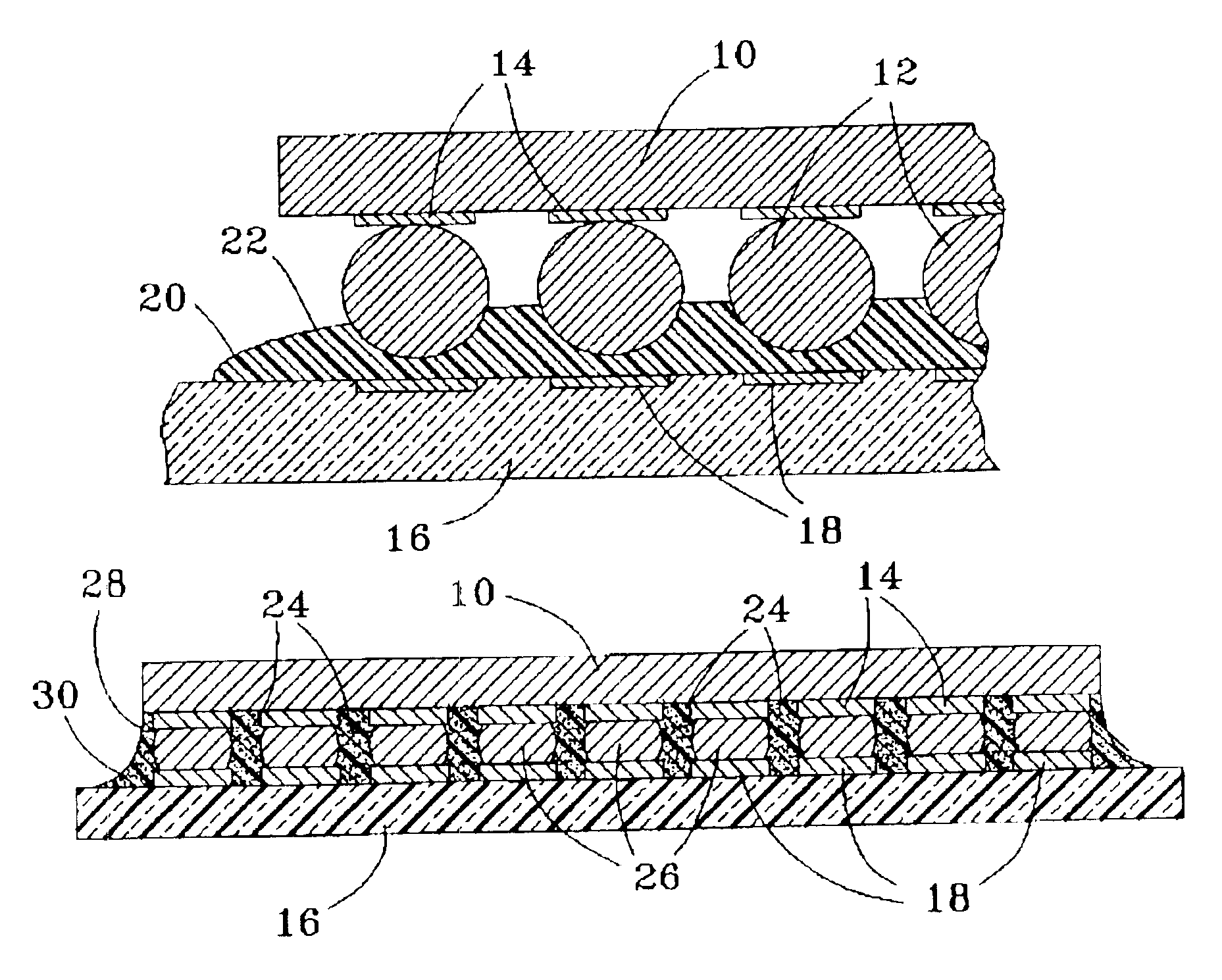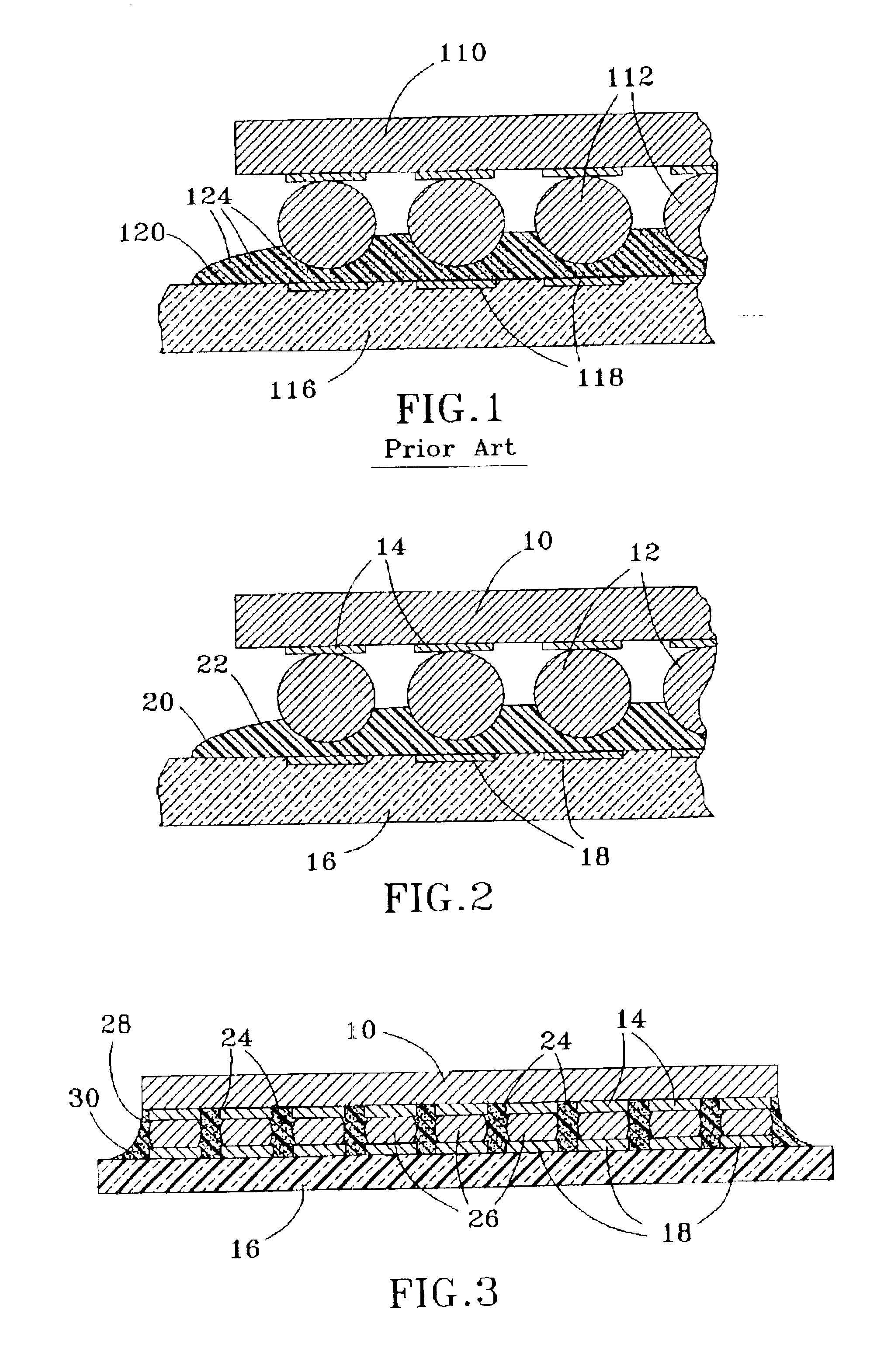No-flow underfill process and material therefor
a flip chip and underfilling technology, applied in the direction of solid-state devices, basic electric elements, semiconductor devices, etc., can solve the problems of expensive process steps, complex process monitoring protocols, and high cost of process monitoring equipmen
- Summary
- Abstract
- Description
- Claims
- Application Information
AI Technical Summary
Benefits of technology
Problems solved by technology
Method used
Image
Examples
Embodiment Construction
[0019]A no-flow underfill process in accordance with the present invention is schematically represented in FIGS. 2 and 3, by which a no-flow underfill material 20 is initially deposited in an unfilled condition (FIG. 2), but is formulated to form a particulate filler material 24 in situ (FIG. 3) following placement of a bumped circuit component 10. In FIG. 2, the underfill material 20 is shown as having been deposited on a substrate 16, which may be a circuit board formed of various materials, such as a thin organic laminate printed wiring board (PWB). As shown in FIG. 2, the circuit component, more specifically a flip chip die 10, is to be attached to the substrate 16 with solder bumps 12 formed on pads 14, such as under-bump metallurgy (UBM), defined on the die surface. The solder bumps 12 are intended to register with metal traces 18 (or other suitable terminals) on the substrate 16. While the underfill material 20 is represented as being deposited as a single layer, additional l...
PUM
| Property | Measurement | Unit |
|---|---|---|
| Dielectric polarization enthalpy | aaaaa | aaaaa |
| Flow rate | aaaaa | aaaaa |
| Adhesivity | aaaaa | aaaaa |
Abstract
Description
Claims
Application Information
 Login to View More
Login to View More - R&D
- Intellectual Property
- Life Sciences
- Materials
- Tech Scout
- Unparalleled Data Quality
- Higher Quality Content
- 60% Fewer Hallucinations
Browse by: Latest US Patents, China's latest patents, Technical Efficacy Thesaurus, Application Domain, Technology Topic, Popular Technical Reports.
© 2025 PatSnap. All rights reserved.Legal|Privacy policy|Modern Slavery Act Transparency Statement|Sitemap|About US| Contact US: help@patsnap.com


